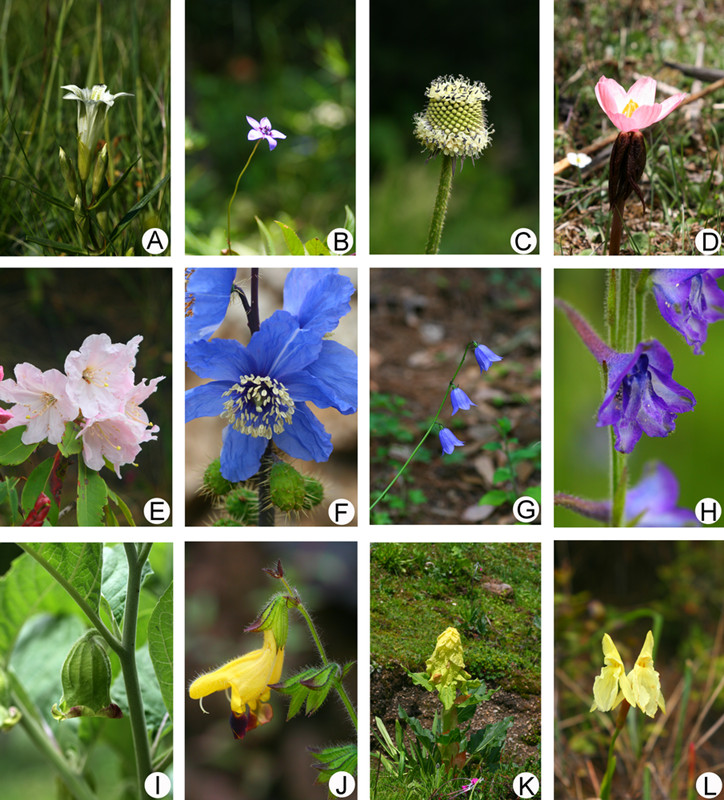The diversification and evolution of floral traits are driven by both biotic and abiotic agents. Among the most well-studied agents is rain, which can wash away pollen grains, reduce pollen viability and dilute nectar thus affecting the reproductive fitness directly or indirectly. Strong ultraviolet radiation (especially UV-B radiation) is also known to reduce pollen viability, and strong UV-B radiation is a typical characteristic of alpine environments. Accordingly, it may exert selection pressures on floral traits of alpine plants as well. However, the influence of UV-B radiation on the evolution of flower structure remains relatively unexplored. According to the previous research, the reflexed flower stalk of Anisodus luridus during anthesis is to avoid the influences of frequent rain fall and intense ultraviolet radiation on the pollen quantity and quality, suggesting that ultraviolet radiation indeed exerts selection pressures on the floral traits of alpine plants (Wang et al., 2010. American Journal of Botany, http://www.amjbot.org/content/97/10/1618.full).
Ms. ZHANG Chan, a doctoral candidate from Kunming Institute of Botany (Institute of Tibetan Plateau Research at Kunming), carried out pollen germination experiments on 42 alpine plant species in the Lijiang Forest Ecosystem Research Station, supervised by professor YANG Yongping and DUAN Yuanwen. Floral forms were categorized as either protecting or exposing pollen grains to UV-B. They found that the floral materials of plants with exposed and protected pollen grains were able to block UV-B at similar levels. Exposure to UV-B radiation in vitro resulted in a significantly greater loss of viability in pollen from plant species with protective floral structures. The pronounced sensitivity of protected pollen to UV-B radiation was associated with the type of flower structure. These findings demonstrate that UV-B radiation plays an important role in the evolution of protective floral forms in alpine plants distributed on the Qinghai-Tibet plateau and the adjacent areas.
The research findings were published online with the title of “Pollen sensitivity to ultraviolet-B (UV-B) suggests floral structure evolution in alpine plants” on the journal, Scientific Reports.
(http://www.nature.com/srep/2014/140331/srep04520/full/srep04520.html).

Flower structures defined as exposing (A–F) and protecting (G–L) the pollen of several representative plant species from the high altitudes of the Qinghai-Tibet Plateau and adjacent areas.(Image by ZHANG Chan)




